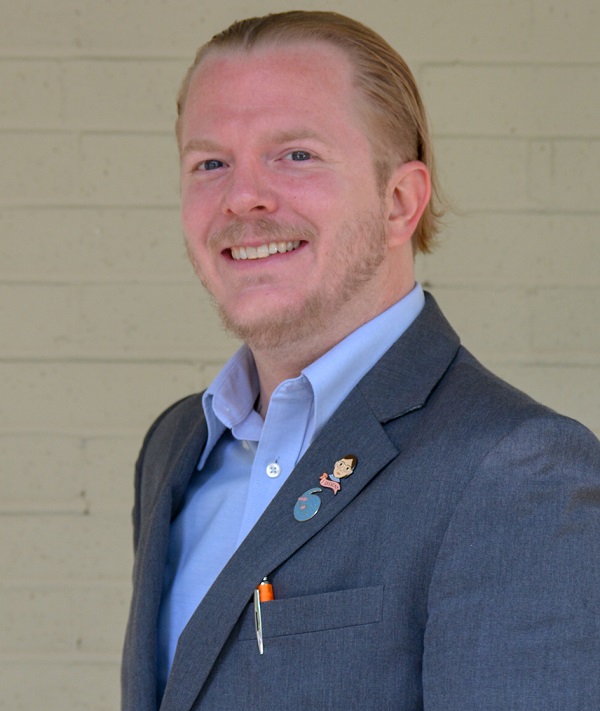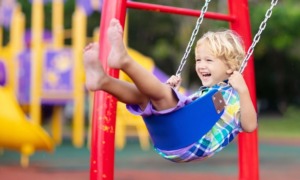 SUN OK/SHUTTERSTOCK
SUN OK/SHUTTERSTOCK
What is your favorite summer memory? Whether it was playing basketball down the block, heading out to see cousins on a family trip, learning fun new things in summer camp or just spending the days with your neighborhood friends, there is something magical about a childhood summer.
It was an almost tangible pause between one school year and the next. Summer stood as a clear-cut gateway to the next step with two months to enjoy a less rigorous routine before the journey began again. Of course, nothing is perfect. Summer could bring its fair share of trials, hardships and possibly trauma, but I would venture to guess most of us hold a special place in their hearts for those summers in our youth.
To state the obvious, this previous summer was like no other we’ve experienced. The shelter-in-place, social distancing, closings of parks, beaches and countless summer experiences forced an extended isolation on our youth. During this time, our children and teens have also been inundated with story after story and scene after scene of police brutality, racism, murder and unrest. While sadly this is not new in this country, the separation prevented outlets that would have helped them process while allowing them to be heard.
As organizations serving youth continue to roll out virtual programs, or are resuming in-person fall programming, we are adapting everything to best meet the needs of our youth, families and communities. Safety will always remain the foundational layer for every single program.

Justin Hensley
After that, however, is the question of how to best adapt the focus of programming we deliver. Out-of-school time has always had the fortune of holding a wide scope and sequence that allows flexibility and freedom to target a wide array of youth development areas.
While schools begin the arduous task of tackling a new combination of academic summer and COVID learning slide, OST programs have an opportunity to partner as we push to provide the SEL (social emotional learning) needed to continue holistic development of all our youth. Due to all that our youth have experienced in the last seven months, any feelings of control and any sense of stability have been at best numbed and at worst completely destroyed.
Training staff on Youth Voice
We are standing before an opportunity of resounding importance in helping our youth heal and grow. The opportunity is to listen to them and facilitate ways to amplify their voices.
Different organizations may use different standards of quality depending on their region, state or ties to a national tool, but youth voice and leadership is a vital pillar of quality across the board. In 2014, the California Afterschool Network “crosswalked” the seven most commonly utilized quality standard assessment tools, both self- and observation-based, to measure alignment of their standards. Only three of the 12 standards analyzed were found to be strong or moderately aligned across all seven tools, with youth voice and leadership being one of them. If youth voice and leadership’s importance is universally recognized in a “normal” year, we must understand the direness of it now more than ever.
Fortunately, OST intermediaries and support organizations have been creating high-impact resources for years now. OST providers themselves have also proved adept at building and delivering programming that fosters youth voice and leadership on the highest level.
Between new COVID policies and the panic to erase academic slide, our staff will be receiving support and training at a high clip. While academic support and enrichment remain an integral part of OST programming, our greatest potential for impact right now is ensuring the holistic approach to positive youth development is not lost in the academic panic.
Designing our trainings and professional development to bring intentionality to listening to our youth is paramount. Program managers must explicitly state and give staff the OK to stop and listen. Alongside emphasizing that importance, a high-quality youth voice training is needed.
Depending on where your program is located, there should be resources available from local and state agencies and intermediaries. The Weikert Center for Youth Program Quality method training youth voice would be an excellent addition to your staff professional development overall, but I would recommend the method training Ask Listen Encourage as a foundational training and focus for this fall. Having your staff prepared to ask effective questions, listen actively and encourage success will be the backbone of daily opportunities to foster youth voice.
Social Emotional Learning resources
In addition to having training and intentionality on youth voice and leadership, SEL curriculum and resources are needed to further support your staff’s work with their students. Programming will be different this year, whether virtual or in-person. Even well-trained staff can be distracted or overwhelmed by the change or lack of familiarity of the “new normal.”
SEL curriculum and resources will enable your staff to stay on course in providing emotional support by listening to our youth. Two of the resources we use the most at our sites are Sanford Harmony Conversations Cards and the Mood Meter under the RULER framework by Yale. The Conversations Cards are easy to use as opening activities, huddle ups or any time staff has a few uninterrupted minutes with their students. Each card has a question the staff member poses and the youth do the rest.
The Mood Meter is part of a larger framework but focuses on the recognition and labeling of emotions. It functions as a road map for youth to begin expanding their emotional vocabulary to fit the complex feelings they experience. For example, if a child says they are upset or mad when they are anxious or maybe frustrated, it may take time to get to the root of what they are actually feeling. This can compound their anxiety or frustration.
By working with our youth on identifying what they are feeling, it gives them the tools needed to be understood. Also note, while this piece explores more internal steps programs can take, partnerships can also be a substantial support to SEL programming this fall.
Youth Voice and Leadership programming
After training and equipping your staff, the next level is to implement programming designed to amplify their voices and experiences. Your organization most likely already has programs in place that produce strong youth voice and leadership outcomes. If so, you can open the scope of material to include what they are experiencing.
For instance, After-School All-Stars traditionally has spoken word and DJ clubs that are centered on youth voice. Last summer Carlos Santini and Andrea Bazan of our national team led the creation of Tik Tok Music Academy. This took the spirit of our traditional music clubs but included conversations about the pandemic and inequities in the United States, explored how music has been an outlet for expression and paired the teens with mentors to guide them through the songwriting process.
The national program team also used the opportunity to pivot our yearly All-Star Leadership University into Leaders Now. ASLU was an annual event that brought youth together to learn leadership qualities and best practices. Leaders Now holds many of the same aspects but puts the spotlight on students and alumni working through and sharing how they are becoming active and leading during this specific time.
If you do not have existing programming centered on youth voice, consider how to implement writing, music or art enrichment activities that help youth have an outlet to express themselves. If you do not have existing programming centered on youth leadership, consider service learning projects or possibly forming a youth advisory board.
The “how” above should not be revolutionary to experienced positive youth development professionals. The research has been published for some time. The curriculum and support have already been developed. The programs and clubs to support youth voice and leadership have been envisioned and created long before 2020.
The purpose here is not to unveil a shiny new silver bullet to answer all our problems, but rather to implore programs to set an unwavering intention on listening to our youth. We are all learning and adapting. We are learning Zoom, Teams, Skype and their glitches. We are continuously improving our virtual programs to be as engaging as possible.
We are recreating all our systems, policies and procedures to ensure our youth are safe when they are with us in person. We are even stepping into new roles like food security providers and technology connectors. Our focus is being pulled in countless new directions to ensure we are doing our best for our youth, and this fall we need to commit to keeping our focus on them and what they are experiencing in this uncertain world. The best way to make sure they feel heard, valued and connected is to make youth voice and leadership a priority.
Justin Hensley serves as the interim executive director of After-School All-Stars North Texas. He is a dedicated youth development professional with 15 years of OST experience and 20 years of higher education experience.































